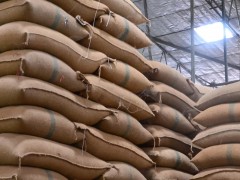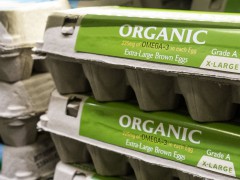Guest writer Gabriella Agostinelli is back again, this time with some shrewd – and potentially controversial – advice for farmers who plant cantaloup. Every farmer is an expert risk-manager, and here she assesses the particular legal risks of growing this seemingly incident-prone crop:
One year after its Listeria-contaminated cantaloupes killed 36 people and sickened 146 others, Colorado’s Jensen Farms reported earlier this summer that it filed for Chapter 11 bankruptcy. Facing multiple wrongful death and personal injury lawsuits, the farm’s decision to file bankruptcy has freed up millions of dollars in insurance money and other funds to pay victims. Bill Marler, food-safety attorney for Jensen’s victims, says $5 million is currently being put into a trust for victims, though he estimates the amount may swell to $20 million in the course of litigation.
The company may also face criminal charges for its food-safety indiscretions. Marler confirmed to the Denver Post that the farm is under investigation by the Colorado U.S. Attorney’s Office, most likely for violations of § 303 of the Food, Drug and Cosmetic Act prohibiting food “adulteration.” According to 21 U.S.C. § 333(a)(1), the Act can carry prison sentences of one year, fines of $1,000, or both amid a showing that harmful food has been introduced into interstate commerce.
Once again, cantaloups are at the center of a public health crisis, stemming from sloppy agricultural practices and less-than impressive third-party agricultural auditing. USA Today reports that the CDC confirmed another deadly outbreak linked to illness-prone cantaloupes this week. At least two have died and over 150 have fallen ill after eating salmonella-strained fruit from an Indiana farm.
As a risk management measure, it may be time for individual farmers to begin to consider not growing cantaloup. Growing any fruit on the ground exposes it to dirt and germs from manure running off livestock fields. Further, unlike the smooth surfaces of watermelon or honeydew, the corrugated surface of the cantaloupe’s skin makes cleaning difficult, as bacteria are easily left behind. Washing cantaloupes together in a large tub can also lead to cross-contamination. Worse, experts contend it is “almost impossible” for consumers to adequately wash cantaloupes at home. Risks are elevated every time a knife presses through a contaminated exterior and transfers bacteria to the fruit within. Each of these unavoidable biological factors bears directly on the legal risks farmers should consider when growing this fruit.
Considering the aggregate risks associated with this type of melon, I’d most likely advise a client to abstain from growing the crop. Almost no farm of any size could recover from a contamination outbreak of the size that we have seen associated with this crop. The magnitude of these outbreaks also appears to be busting through the cap of the product liability policies of the growers in cantaloup cases. If a farmer wanted to go forward regardless of the risk, at the very least, it would be wise to encourage cantaloup farmers to review their policies relative to their scale of production.

















